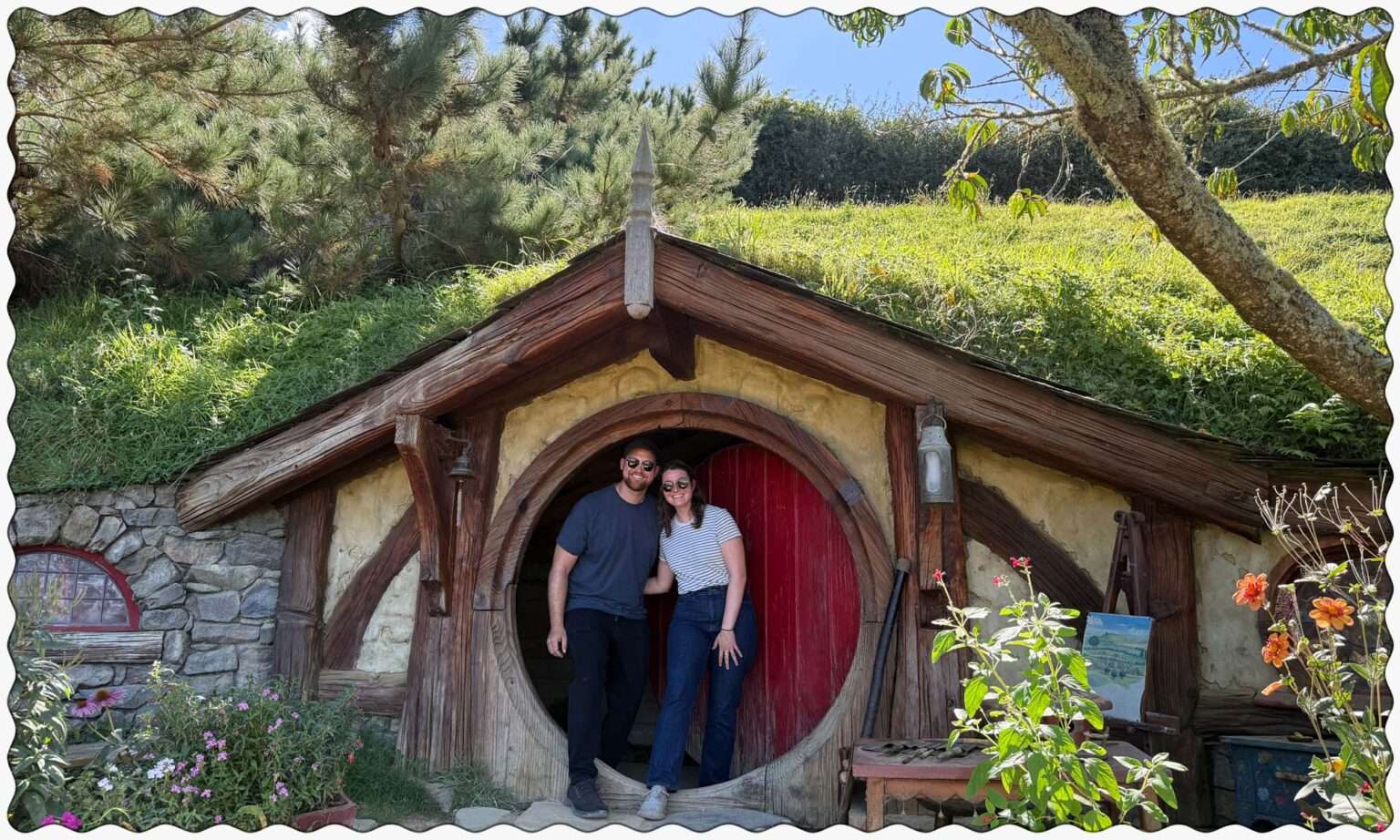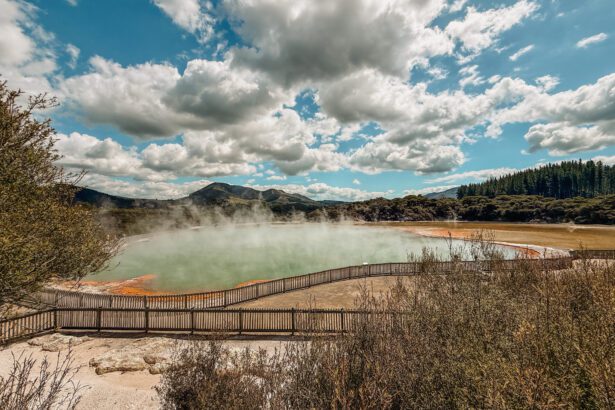Rotorua is located a little under 3 hours from Auckland, and for many people arriving in New Zealand for vacation it is the first place they visit on their North Island itinerary. The town was settled around the 1300s when Polynesians first arrived in New Zealand. They were drawn to the south shores of Lake Rotorua and soon encountered numerous geothermal features which became an important part of their lives. Today descendants of these Polynesian people are referred to as Maori, and in Rotorua nearly 50% of the population identifies themselves as such.
Destination Overview
Rotorua, Hamilton, Hobbiton, and More
After a difficult past of forced cultural assimilation, the Maori community began a cultural revival in the 1960s. Through decades of hard work, the community has won numerous legal settlements and there has been a growing push from the next generation of Maori to proudly rediscover and embrace their ancestral traditions. These traditions are now shared with visitors throughout Rotorua by the Maori people themselves at places such as Te Puia, Whakarewarewa – The Living Maori Village, and Mitai Maori Village. Besides the ability to learn about the unique Maori culture, Rotorua’s geothermal attractions are another primary reason why tourists and locals visit. These range from paid experiences such as Waiotapu Thermal Wonderland or Waimangu Volcanic Valley to free experiences like Kerosene Creek or Kuirau Park. These examples are only a few of the Maori cultural and geothermal activities in Rotorua, which combine to make it worthwhile to visit.
However, some of the North Island of New Zealand’s top attractions are a short drive from Rotorua, meaning people can use it as a base to see even more without needing to change accommodations. The famous Hobbiton Movie Set is only a 1 hour drive, the Waitomo Glow Worm Caves are only about a 2 hour drive, and Taupo is only about a 1 hour drive from Rotorua. While Queenstown is the hub for tourism in the South Island, Rotorua serves that position for the North Island. This does result in a much busier experience than the serenity of smaller New Zealand towns, but the diversity it offers makes it a must visit destination.
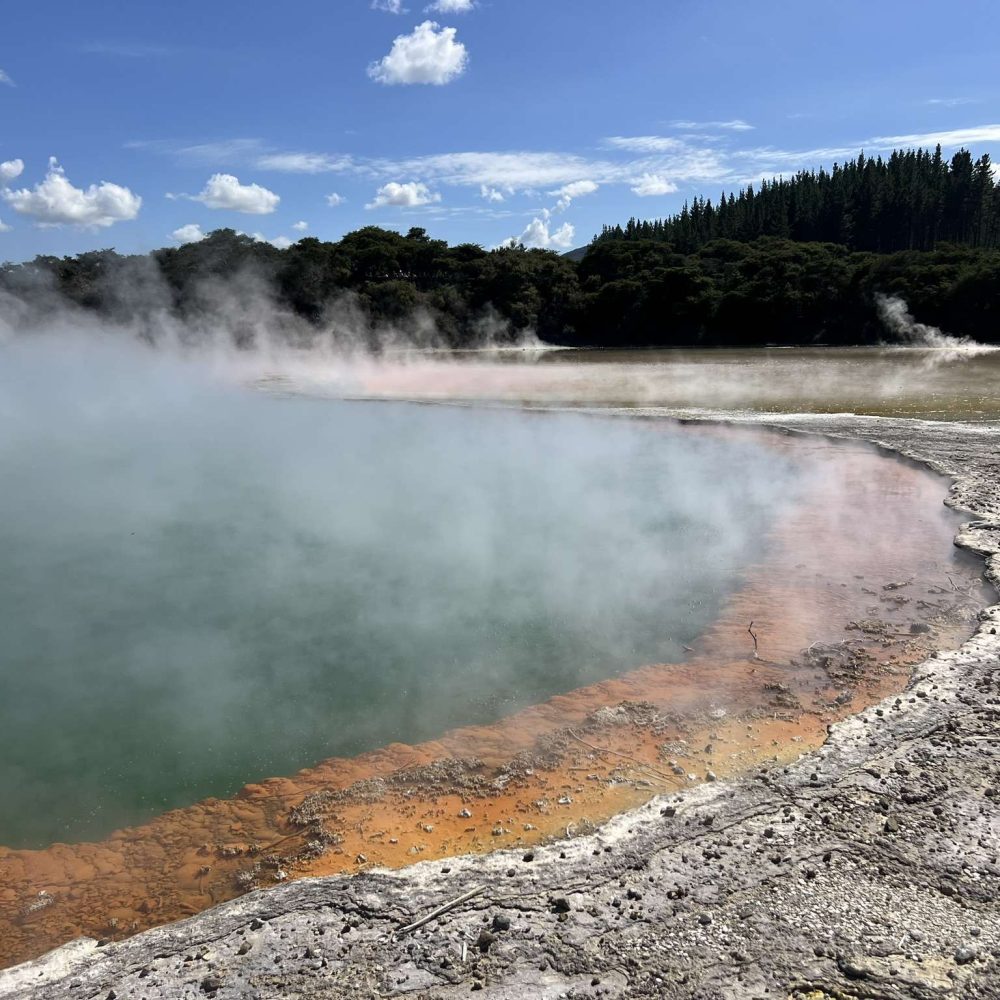
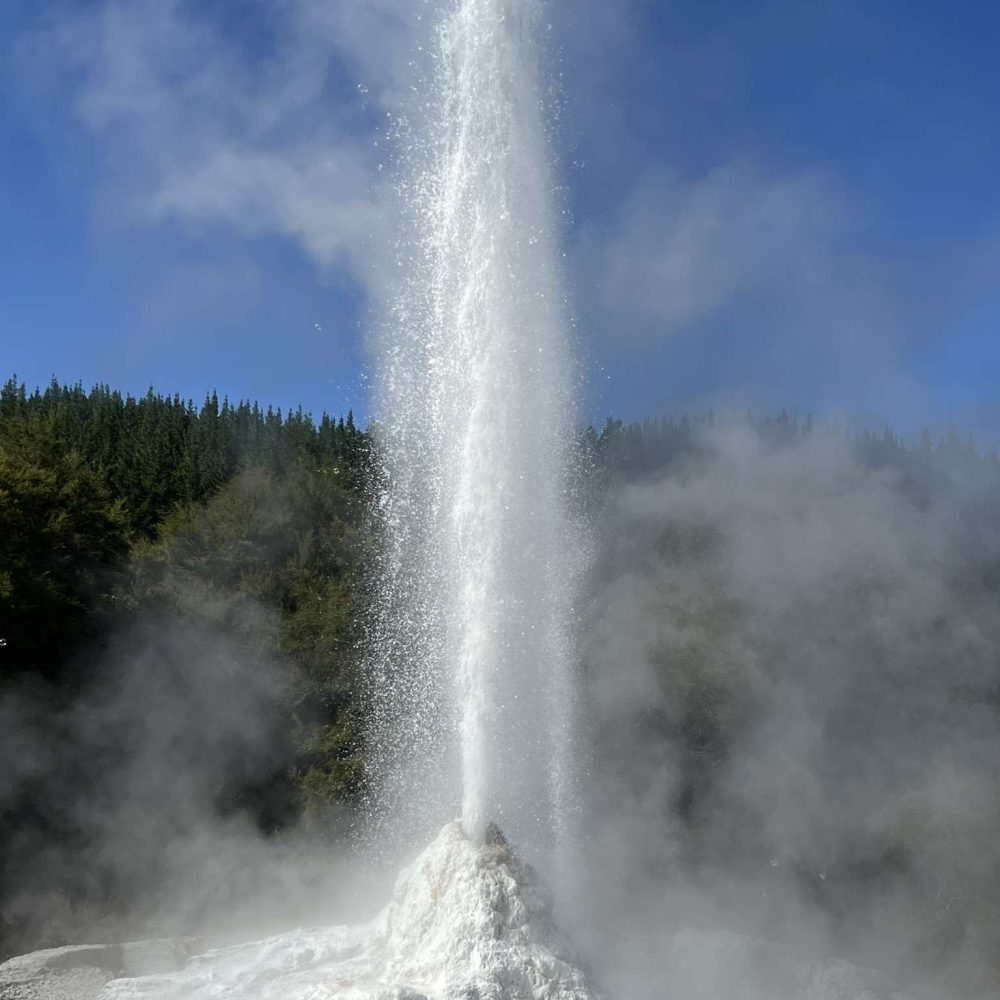
Since we were driving to Rotorua from Taupo, we decided to see the attractions on the way into town. After that we planned to stay in town for a few days before continuing onwards to other top attractions rather than do day trips. The road from Taupo to Rotorua passes by some of the most famous geothermal attractions of the region, so we decided to focus on them for one day and then focus another day on the Maori cultural attractions. Knowing that we had a long day of activities, we arrived at Waiotapu Thermal Wonderland right at the opening. We started with a quick geothermal pool walk, went to the Lady Knox Geyser for a bar of soap controlled eruption, and finished with a longer geothermal pool walk of the whole trail. After a great start to the day we went to Kersone Creek which had been recommended to us by locals as a free spot to enjoy naturally warm waters. There was a small crowd of people enjoying the stream and pool, which made for a fun swim break.

Our next big geothermal activity was the Waimangu Volcanic Valley, which is a long hike through a valley created in 1886 by the largest volcanic eruptions over the past hundreds of years in New Zealand. For most of the walk we were the only ones on the trail which allowed us to contemplate these incredible geothermal pools and streams in tranquility. We managed to catch the last return bus back to the front of the park which saved us a lot of walking back the way we came. After arriving in Rotorua we went to dinner at the Rotorua Night Market where we tried South African food for the first time. After, we went to visit the free Kuirau Park in the middle of town, with mud pools, hot water ponds, and even foot paths that you could enjoy. This jam packed geothermal day left us impressed with Rotorua already and excited for the days ahead.
Where to Read More
The Ultimate Rotorua Itinerary: 3-Days of Culture, Volcanoes and More
A Rotorua itinerary to visit the region, including learning about Māori culture and history, exploring geothermal areas, and visiting Hobbiton.
An Interesting Fact
Maori Culture Continues to Grow in Aotearoa (New Zealand)
In comparison to nearly 50% of the population of Rotorua identifying as Maori, the South Island only has about about 10% Maori living there. It wasn’t until we made it to Wellington on the North Island that we began to substantially learn more about the Maori culture and history of Aotearoa (the Maori name for New Zealand). In Wellington, the Museum of New Zealand Te Papa Tongarewa provided an educational perspective on Maori culture and Karaka Cafe was our first introduction to Maori cuisine. Both experiences left us looking forward to experiencing the culture first hand from the Maori people during our stay in Rotorua. Similar to our day visiting the geothermal attractions around the area, we decided to line up a handful of Maori experiences on the same day.

We started our day at Te Puia shortly after it opened. Here they offer a variety of different guided and cultural experiences led by the Maori community. Our tour started with a walk through the New Zealand Maori Arts & Crafts Institute, a prestigious program that Maori can be accepted into to master their traditional techniques and produce beautiful pieces of art for sale. We were able to watch as the men and women arrived for the day to begin their craft work. Our guide shared the importance of different carving and weaving techniques as well as the significance of materials used to make them. The rest of the tour included visiting a Kiwi bird house and geothermal attractions found on the property. It was interesting to hear the significance of nature and conservation to the Maori community.

Our next stop for the day was at the Whakarewarewa – The Living Maori Village, which is a current Maori community that neighbores Te Puia. There were also a variety of tours and experiences for visiting this village, and we chose to partake in the village guided tour. We learned about Whakarewarewa from Chief, who had grown up and today still lives in the unique community on top of a caldera. The interesting part of the village’s placement is that all of the vapor steam is non-sulfurous, so unlike much of the geothermal activity around Rotorua it does not smell like eggs. The community uses this natural phenomenon for everyday tasks such as cooking and bathing. While we walked around the village, we heard kids learning at school, passed by homes, and saw shops. It was a wonderful learning experience, and afterwards we stopped by their Geyser Cafe to try traditional food. Given the popularity of the village, they only had a limited selection but we were able to try a chicken hangi pie. It was very good but left us wanting more. We had heard Kai Caff Aye was an authentic option in the town center and had a large menu of Maori dishes; it did not disappoint. The creamed paua pocket was delicious, as was a second hangi pie, this time loaded with pork, chicken, lamb potato, kumara, pumpkin and stuffing. The cafe was packed with Maori families enjoying the food but also watching Te Matatini o Te Kāhui Maunga prelims, a competition of elite teams performing for National Champion of Kapa Haka.

The final Maori experience for the day was a cultural experience and hangi dinner at Mitai Maori Village. Here, a large group of visitors was invited by a Maori leader to learn more about their traditions. We saw the preparation of the hangi dinner cooked below the ground with hot rocks, then we watched a traditional war chant in a canoe, and lastly there was a Maori dance performance. Initially it felt a little touristy, but our Maori leader did a great job sharing real perspectives about life in New Zealand. He assured us that this was all a cultural reenactment, and that everyone lives a modern life just like all other Kiwis. However, he did share more about the real struggles of the Maori people from his generation and the positive outlook of the current generation. It helped put into context the complex history, but also gave us hope to see the way the community now embraces their unique heritage and has pride in showing it with people who traveled from all over the world to learn about it,
Travel Tip of the Week
Rotorua is a Great Location to Visit Top North Island Attractions
While we chose to travel from Taupo to Rotorua and then onwards to Hamilton, all of the locations we visited around these towns could be done with numerous day trips from Rotorua’s central location. This includes top experiences such as Ngātoroirangi Mine Bay Māori Rock Carvings, Huka Falls, Wairakei Terraces & Thermal Health Spa, and Orakei Korako Geothermal Park & Cave located about an hour south of Rotorua in Taupo. After a wonderful stay in Rotorua, we were excited to continue west for one day of more authentic New Zealand touring and one day of top tourist experiences to conclude our visit to this part of the country.

Our first day after Rotorua was a more authentic New Zealand experience and started at the Agrodome on our way out of town. Here we were able to attend a farm show to learn about all various species of sheep and the significance of sheep to New Zealand. In total there are nearly 24 million sheep in the country which is almost 5 times the size of the human population. After the show we boarded a tractor and toured the actual farm. Some of the animals are kept for tourism purposes, but a bonus experience is you are able to hand feed and interact with sheep, deer, and alpaca. While this tour is especially fun for families, it is a great way to see a glimpse into the very important agriculture industry of the country.
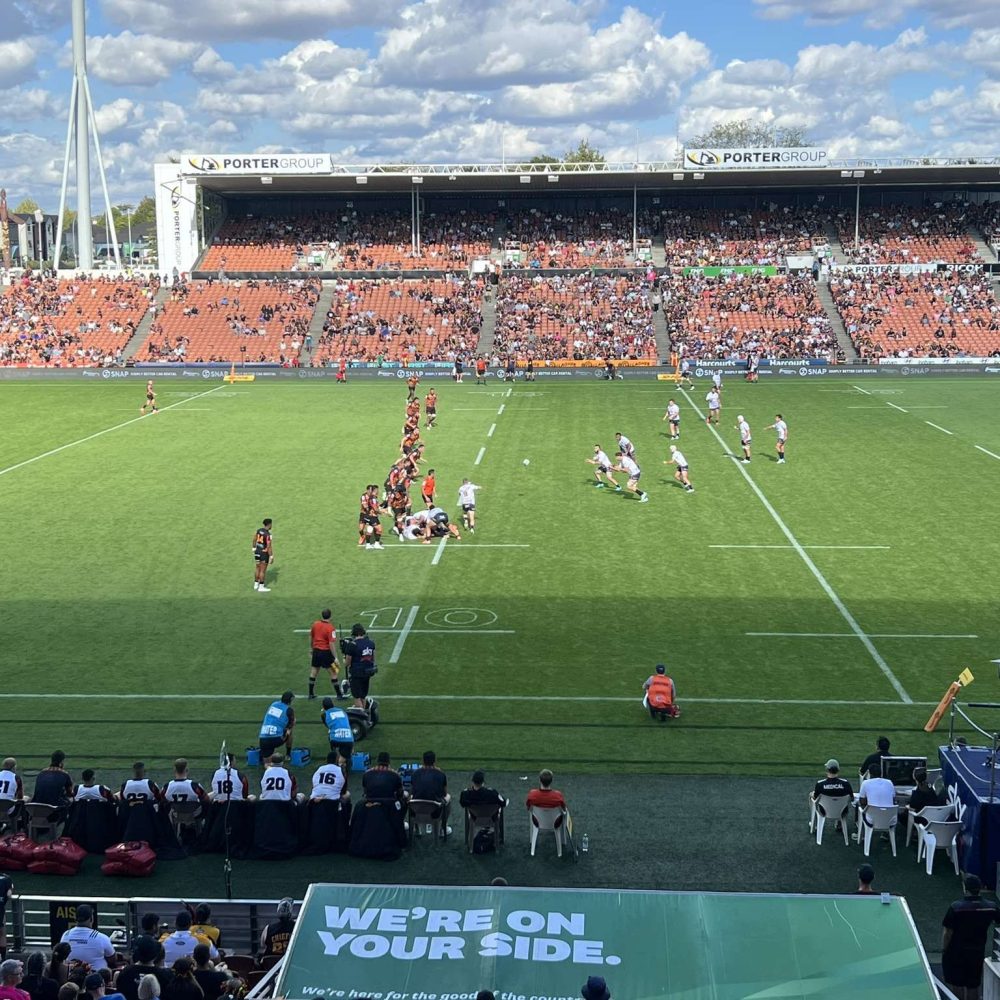
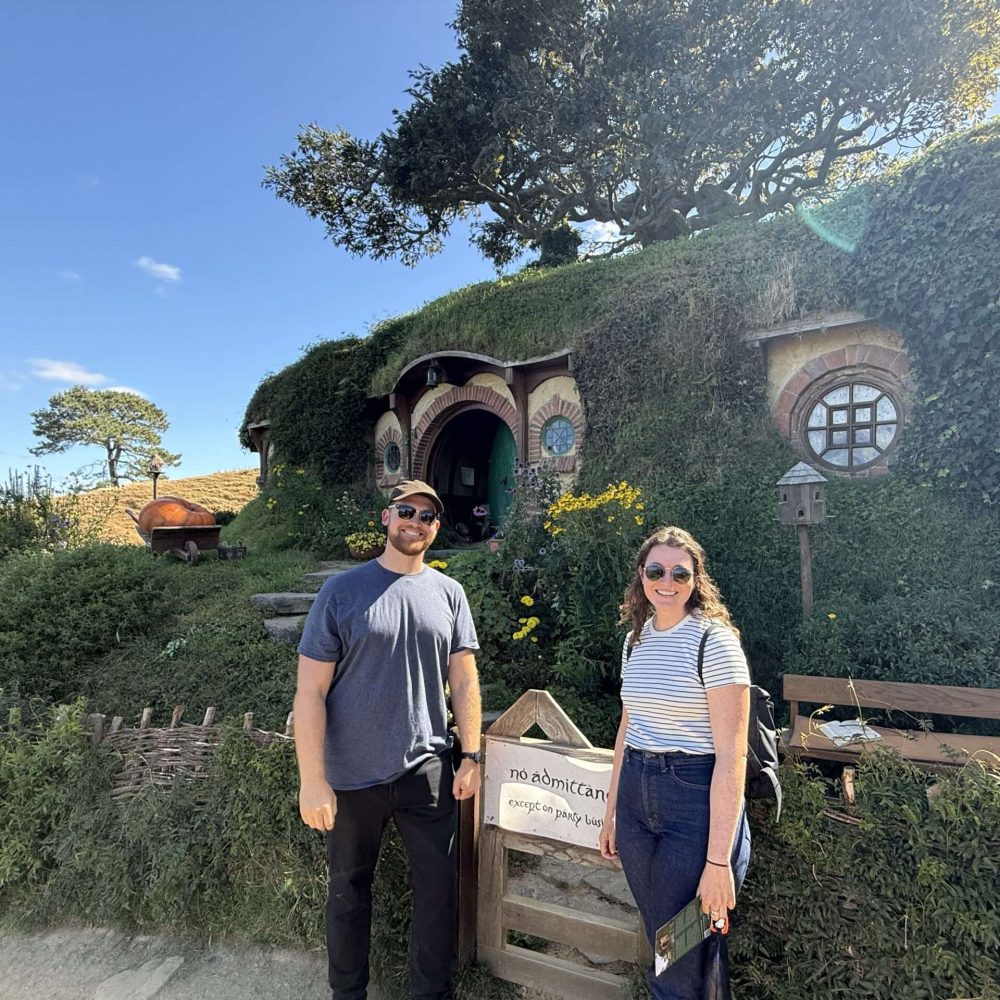
After the tour, we had a little over an hour drive until we reached Hamilton. On the way into town we passed by a Bunnings Store, a massive hardware store that on Saturday’s does a sausage sizzle to help raise funds for local community organizations. Even though Bunnings is an Australian company, it still is an important part of New Zealand, and I stopped by to indulge in a sausage for a good cause. While Hamilton is not high on many tourist lists, it is the fourth largest city in New Zealand behind Wellington. The primary reason for our visit was to attend a Hamilton Chiefs vs. ACT Brumbies Super Pacific Rugby Match. It was our first professional rugby match, and many of the players on these teams are top tier, representing the national teams of their respective countries on the international stage. The match was a fun family affair with multiple generations in attendance, and it was a memorable experience watching the Chiefs win at home. After the match we went out for dinner and drinks in downtown Hamilton. We met some nice Kiwis at the Wonder Horse bar, and they were initially confused why we visited but were so happy to hear when we told them we were in town to watch the match.
Our next day was centered around two of the most touristy attractions in all of New Zealand. In the morning we set off from Hamilton to visit the Waitomo Glowworm Caves. Here, we learned more about the significance of the caves to the Maori people and the relatively short life cycle of the glow worms that we would see during the cave boat ride. While photos were not allowed in the cave, being able to take in the beauty of the glowworms sparkling in the dark was a spectacular experience. The tour was about an hour, and then we needed to pass back by Hamilton on our way to the most famous tourist attraction in New Zealand. Before we went, we had some additional time before the start of our tour so we took a detour to Raglan. We enjoyed a coffee and some ice cream while walking around the charming coastal town and visited its famous black sand surfing beach called Ngarunui Beach.

As the afternoon went on we had to depart to make it on time to our final activity of the day, a 2.5 hour tour of the Hobbiton Movie Set. After all of the Lord of the Rings filming locations we stopped at so far, this was the one I had been looking forward to most. The experience far exceeded my expectations, and is at the top of my list for favorite fully manufactured tourist activities I have ever done. After Lord of the Rings and Hobbiton were filmed, the owner of the land that the hobbit house sets were built on proposed a joint venture to create an official Hobbiton Movie Set tourist attraction. Initially, these homes were only staged exteriors, but people asked so much for an interior that they added two replica homes and the level of detail on the inside is so exact that you really feel like you are in a home from the movie. Besides learning about different scenes filmed throughout the set, we were also taken to vantage points that inspired this location being selected for The Shire. At the end of the tour, we had an included drink at The Green Dragon. The time flew by on the tour because it was such a fun time. We left Hobbiton and drove through the New Zealand countryside feeling like we were passing through Middle Earth on our way to our next destination, Tauranga.

